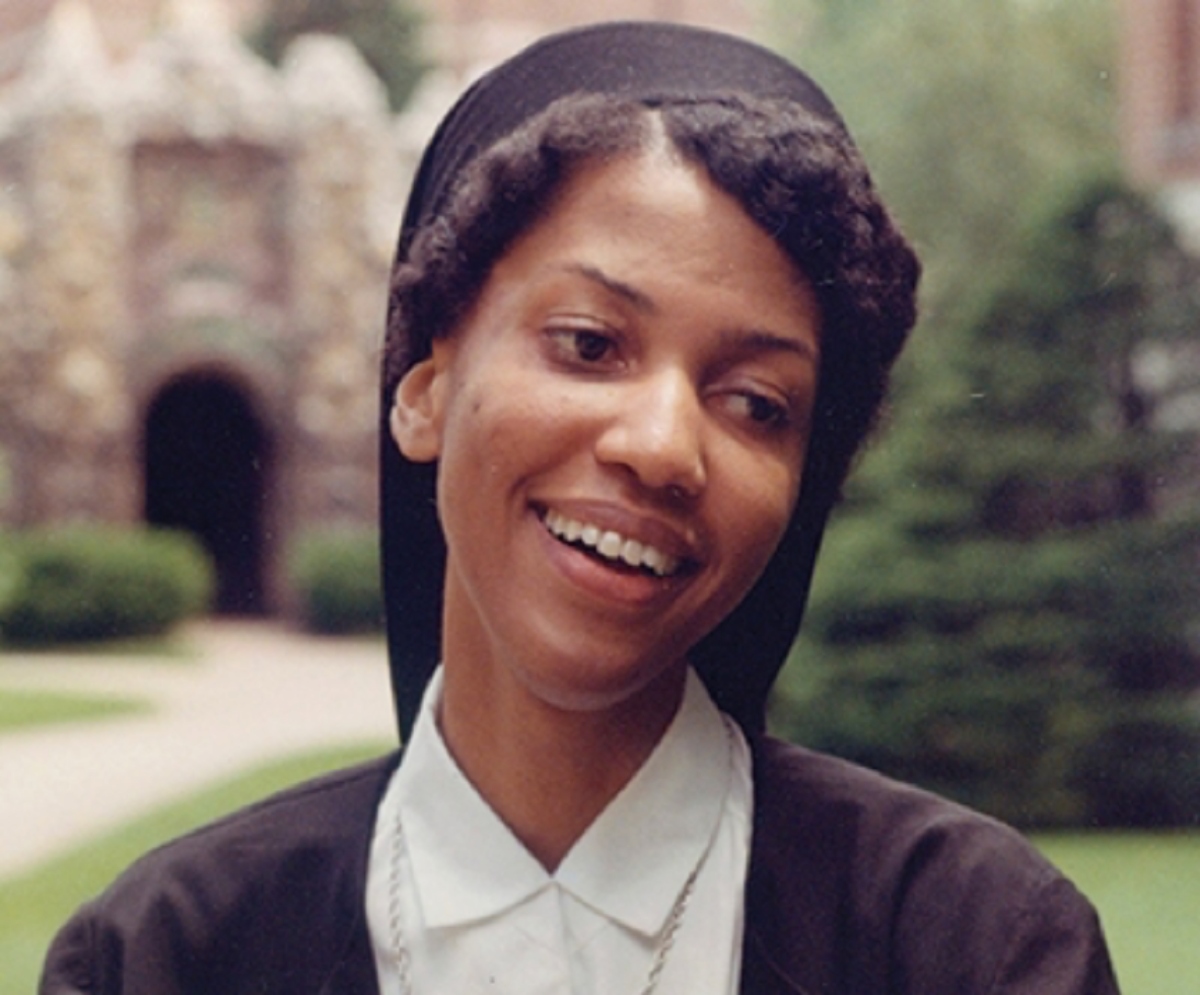
by Rachel Wood (B.A. English '21) and Veronica McGraw (B.A. English '19)
Sr. Thea Bowman was born in 1937 and raised in Canton, Mississippi. She converted to Catholicism and became the only African American woman among the Sisters of Perpetual Adoration - both before turning sixteen (“U.S. Bishops”). It comes as no surprise that, when she came to The Catholic University of America in the late 1960s, she made her mark on the university. She earned a master’s degree in English in 1969 and a doctorate in English language and literature in 1972. She also created and taught Catholic University’s first Black literature course. With this foundation, Sr. Thea would go on to use her artistic gifts, intellectual acumen, and profound faith to deepen the Church’s appreciation for the gifts of the African American community. But perhaps Sr. Thea has not yet finished making her mark on the Catholic Church or Catholic University, because her elevation to a Servant of God by the U.S. Bishops this past November has placed her on the path to sainthood.
Central to Sr. Thea’s work was the intersection between her faith, her culture, and African American art. In a 1990 article for CUA Magazine, she writes about how her parents and their elderly friends taught her “religious, cultural, and survival values” through “their music, stories, faith, traditions, and love” (Bowman, CUA Magazine 7). While studying at Catholic University, she recognized “the extent to which music encodes values, history, and faith of my people…oral tradition is alive and well in the black community and…music is a way we have of preserving history and teaching values.” (Bowman, CUA Magazine 8). Sr. Thea’s love of music, as well as her understanding of its spiritual and rhetorical power, was exemplified in a presentation she gave at the Graduate English Association. Dr. Joseph Sendry, a professor in the English department at the time, recalls how Sr. Thea performed an African American spiritual dressed in traditional Gospel singer regalia for fellow students and faculty. She then delivered a lecture analyzing the rhetorical purpose of every element of the performance: gestures, costume, her delivery of the text, etc. As Dr. Sendy recalls, “It was spectacular.”

Sr. Thea’s studies in the Catholic University English department imbued her with a deep appreciation for English language and literature that grew along with her love of faith, music, and African American culture. Her particular interest in rhetoric led her to write her doctoral dissertation on the relationship of pathos and style in St. Thomas More’s A Dialogue of Comfort Against Tribulation. In her dissertation, Sr. Thea argued that the appeal to pathos was an indispensable yet largely ignored element in More’s Dialogue. The work was written while More was imprisoned in the Tower of London as an attempt to comfort and encourage his loved ones, and by extension, all those who would face religious persecution in the future. Sr. Thea argued that pathos not only strengthened More’s appeals to reason and authority, but that it also created a style marked by “the conscious desire to quicken imaginations, stir affections, and inflame hearts; the indefatigable endeavor to replace ungodly emotions by their opposites and to stir wills by confronting the emotions with their proper objects” (Bowman, "Pathos and Style" 180). These pathetic appeals, she contended, are essential in order for the Dialogue to achieve its purpose: “to have an effect on hearers whose minds are clouded by perturbations and whose wills are mesmerized by fears” (Bowman, "Pathos and Style" 178).
Like Thomas More, Sr. Thea would go on to use her profound faith and rhetorical skills, along with her dedication to African American arts, to uplift others in an era of racial tensions and to build up the Church as a place where black Catholics could thrive. After she finished her doctorate, she spent much of the rest of her life working as the Diocese of Jackson’s consultant for intercultural awareness. She continued to teach Black literature, as well as “black theology and the arts that bring black expression to preaching, teaching, and liturgy within the Church.” (Bowman, CUA Magazine 8). Sr. Thea’s teaching later extended beyond the classroom, as she traveled to give lectures about the need to embrace African American Catholics and the unique gifts they brought to the Church. One of her final lectures, given at the conference of U.S. bishops in 1989, ended with a performance of an African American spiritual, not unlike that which she gave at Catholic University years before. But this time, she urged the bishops to stand together and sing with her (“U.S. Bishops”). Through her example that day and throughout her life, she gave witness to her words: “If we work together, pray and stand together, we can create a new heaven and ease life for each other” (Bowman, CUA Magazine 9). As a university, we have been given the unique opportunity to see one of our own students enter the process of canonization. Let us give witness to her holy life by imitating her example of excellence, passion, and faith.
Sources:
“U.S. Bishops Conduct Canonical Consultation on Cause for Canonization of Sr. Thea Bowman, F.S.P.A.” United States Conference of Catholic Bishops, 14 Nov. 2018, www.usccb.org/news/2018/18-185.cfm.
Bowman, Thea. “A Case of Multiple Inspiration.” CUA Magazine, 1990, pp. 7–9.
Bowman, Thea. "The Relationship of Pathos and Style in A Dyalogue of Comforte Agaynste Tribulacyon: A Rhetorical Study." 1972. The Catholic University of America, PhD dissertation.
Photo Credits:
Franciscan Sisters of Perpetual Adoration www.fspa.org (Sr. Thea as a young woman)
Catholic U. Archives (Sr. Thea and clergy)
Acknowledgements:
A special thank you to Dr. Joseph Sendry for kindly meeting and talking with us and to Catholic U. Archives for providing a copy of Sr. Thea’s article from CUA Magazine.
